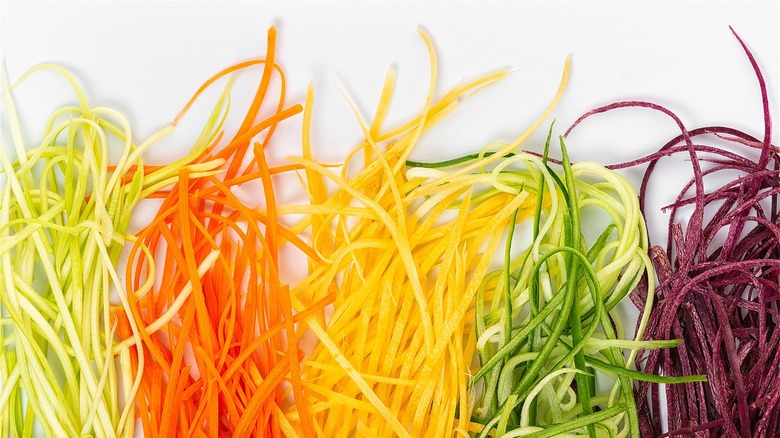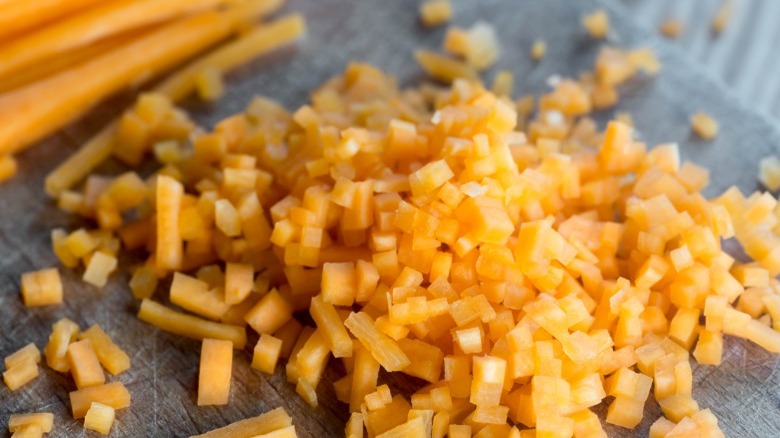What's The Difference Between Julienne And Brunoise Cuts?
You don't have to be a professionally trained chef to proficiently wield a knife in the kitchen. There are many ways to cut up your food, and some of the more common methods (chop, cube, dice, mince, etc.) might already be part of your repertoire.
To get started, you'll obviously need proper knives. According to the Food Network, you need to have three basic knives in your kitchen — a paring knife for peeling and other delicate tasks, a serrated knife for soft-centered foods like bread, and, most importantly, a chef's knife for your chopping needs.
Another rule of thumb to know off the bat is how to keep your fingers safe from the blade. New York Times Cooking recommends the "bear claw" method of bending the fingertips downward and applying pressure to whatever you're chopping. This also happens to be one of the three most important kitchen knife skills everyone should know. Two methods of cutting that are often confused — julienne and brunoise — should also be part of your chopping knowledge base, Michelin Guide explains.
Both julienne and brunoise cuts follow precise guidelines
If you're looking to take your knife skills to the next level, it's important to understand the difference between julienne and brunoise cuts. There's a time and place for each, according to Michelin Guide, which notes that having standardized cuts helps regulate cooking practices in restaurant kitchens, where consistency is key.
The julienne technique originated in France and guarantees uniformly-sized pieces that will cook evenly and provide crunch, Masterclass reports. After you dust off your kitchen knives, you'll first need to square the edges of whatever you're chopping. Once that's done, cut your food into thin strips, then reduce those to matchsticks. Ideally, your final cuts should be about 2 or 3 inches long and ⅛ of an inch wide.
To achieve a brunoise cut, you'll take your julienne a step further by dicing your matchsticks into even chunks that are roughly ⅛ of an inch each. This is one of the smallest cuts, per Chef's Vision, which also states that those larger than ⅛ of an inch are considered a dice, not a brunoise.

